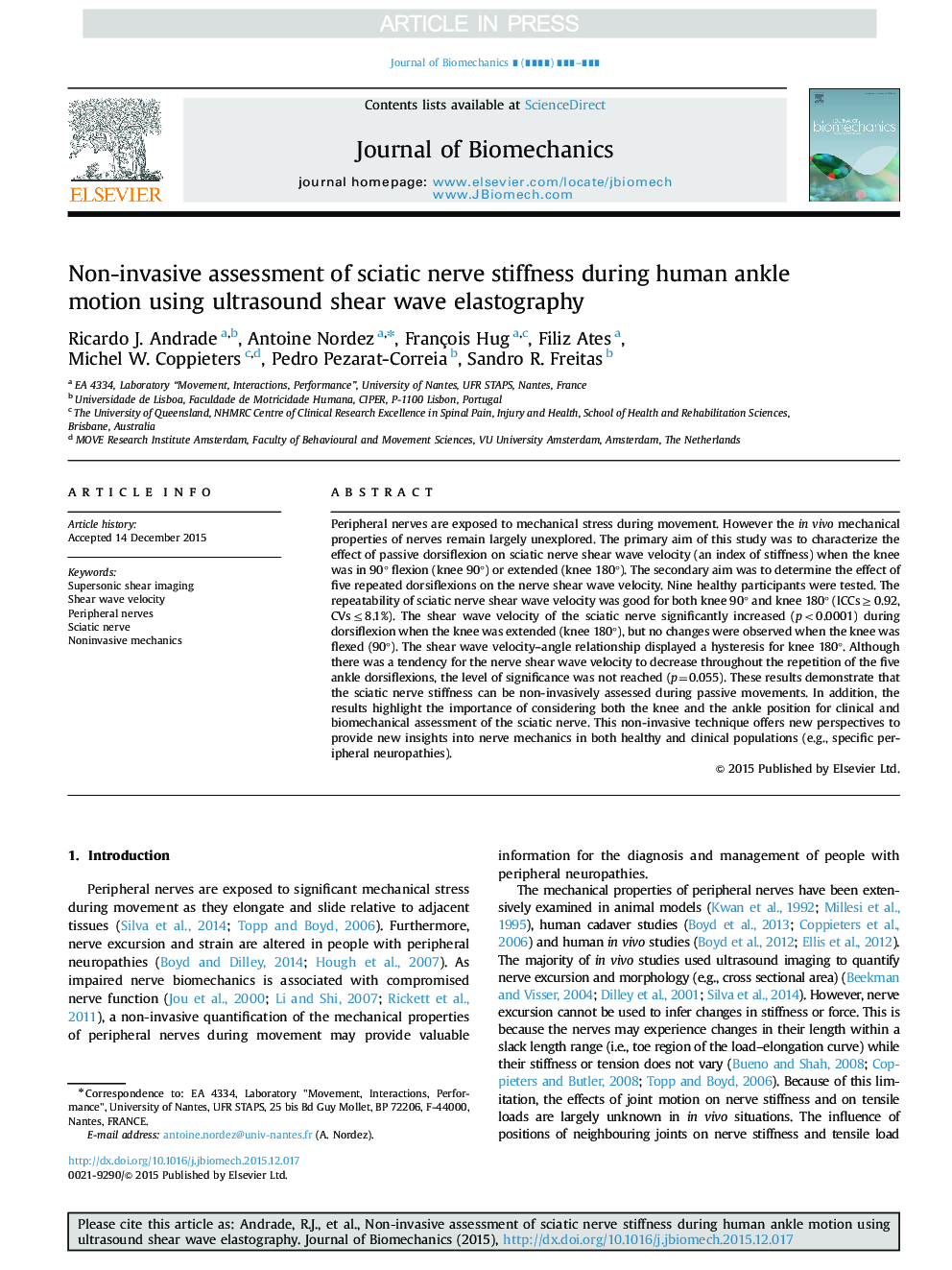| Article ID | Journal | Published Year | Pages | File Type |
|---|---|---|---|---|
| 10431128 | Journal of Biomechanics | 2016 | 6 Pages |
Abstract
Peripheral nerves are exposed to mechanical stress during movement. However the in vivo mechanical properties of nerves remain largely unexplored. The primary aim of this study was to characterize the effect of passive dorsiflexion on sciatic nerve shear wave velocity (an index of stiffness) when the knee was in 90° flexion (knee 90°) or extended (knee 180°). The secondary aim was to determine the effect of five repeated dorsiflexions on the nerve shear wave velocity. Nine healthy participants were tested. The repeatability of sciatic nerve shear wave velocity was good for both knee 90° and knee 180° (ICCsâ¥0.92, CVsâ¤8.1%). The shear wave velocity of the sciatic nerve significantly increased (p<0.0001) during dorsiflexion when the knee was extended (knee 180°), but no changes were observed when the knee was flexed (90°). The shear wave velocity-angle relationship displayed a hysteresis for knee 180°. Although there was a tendency for the nerve shear wave velocity to decrease throughout the repetition of the five ankle dorsiflexions, the level of significance was not reached (p=0.055). These results demonstrate that the sciatic nerve stiffness can be non-invasively assessed during passive movements. In addition, the results highlight the importance of considering both the knee and the ankle position for clinical and biomechanical assessment of the sciatic nerve. This non-invasive technique offers new perspectives to provide new insights into nerve mechanics in both healthy and clinical populations (e.g., specific peripheral neuropathies).
Related Topics
Physical Sciences and Engineering
Engineering
Biomedical Engineering
Authors
Ricardo J. Andrade, Antoine Nordez, François Hug, Filiz Ates, Michel W. Coppieters, Pedro Pezarat-Correia, Sandro R. Freitas,
